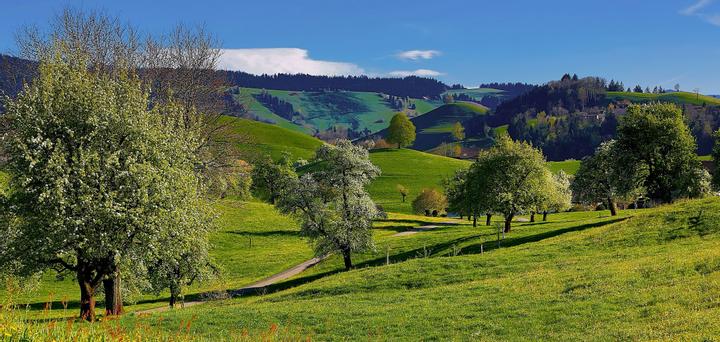
Local ingredients
What do you mean by "local ingredients"?
When we talk about local ingredients in recipes, we refer to those ingredients that fulfil two conditions:
- There are producers (e.g. farmers) in Switzerland who grow, raise or produce the ingredient locally (within Switzerland).
- If the production of the ingredient is linked to a specific season, then the ingredient must currently be in season.
The dependency to the season means that some ingredients count as local ingredients during certain times but not as loal during other times. Chicken is for example always a local ingredient as it's produced year round in Switzerland. Cauliflower is only local from May to November as it's in season during these months. Coconut is never local as it is not cultivated in Switzerland.
What does the % local value in the recipes mean?
The local indicator (% local) shows what percentage of a recipe's ingredients are local ingredients. The comparison is based on the weight of ingredients. For example, a recipe with 300 grams local ingredients and 200 grams non-local ingredients receives a local indicator of 60% (300g divided by 500g). As the local ingredients can change depending on the season, the local indicator of a recipe can also be different for different times of the year.
Where does the data for the local indicator come from?
The data on domestic production and seasonality of the ingredients come from various associations and NGOs, e.g. the WWF calendar on fruits and vegetables in season and the Bio Suisse seasonality calendar (both in German).
What should be considered when interpreting the indicators?
When you look at the local indicator of recipes, keep in mind that it is only an indication that might help you to cook with more local and sustainable products. As with all indicators, the reality behind the figure is a bit more complicated. The following points should therefore not be forgotten:
- The season of local ingredients varies and cannot be defined to the exact day.
- We are using the whole of Switzerland as a geographic reference for local ingredients. However, for some Swiss places there regions in neighbouring countries that produce non-local products that are actually closer than certain Swiss regions that produce local products.
- Even when it comes to ingredients that can be produced locally and are currently in season, retailers might still sell imported versions of the ingredients. How local a cooked recipe is therefore strongly depends on whether the local varities of the ingredients are actually bought.
- The production location of ingredients is only one of many sustainability related aspects of recipes. The way how the products are produced makes a big difference: Try to go for organically produced ingredients.
How I can I let you know about a wrong % local display?
If you see incorrect or outdated information for a local ingredient, please let us now through the contact form below, so that we can correct it. Thanks for your support!
Incorrect information? Old data? Something doesn't seem quite right with the indicator? Let us know with this form. Thank you!